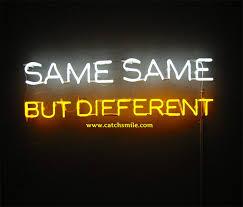
Those who travel to southeast Asia will likely hear the phrase “Same Same But Different” which, among other uses, is commonly said by market vendors trying to sell a knock-off of a brand name item. It says it’s Patagonia, it is not Patagonia, it is cheaper than Patagonia, but it is “same same” (but different, as anyone who has bought knock off gear knows).
Unlike Thai street vendors who long ago acquired a substantial part of the shoppers’ market share, the U.S. health care market has been slow to hand off innovators’ market share to manufacturers of new, “same same but different” protein-based biotech drugs (biosimilars).
In some cases the territorial dispute has gotten plain ugly. Just west of Thailand, Roche is battling against India-based Hetero Drugs in the Delhi High Court of India in an effort to slow the production of its biosimilars, including a new version of Roche’s colorectal cancer therapy AVASTIN.
DAWN OF A NEW ERA
However, CVS’ decision to drop Sanofi’s LANTUS, as it announced in its August 2nd publication, 2017 Standard Formulary List of Removals and Updates, indicates that a new industry trend toward biosimilars could be on the way despite a slow start.
In a research note, Citi analysts said CVS's new formulary marked the "dawn of the biosimilar era," according to this Reuters article published earlier this month.
For biosimilar manufacturers it has been a long cold morning waiting for that sun to rise. It has been over a year since Novartis launched the first U.S. approved biosimilar through its subsidiary Sandoz, ZARXIO (you can refresh your memory and review payer responses to that announcement on HIRC’s blog here), a biosimilar version of Amgen’s cancer drug NEUPOGEN. But well into 2016, the brand name’s drug maintained a 76% market share stronghold, despite a 15% discounted price from the brand drug.
So what’s the hold up? The science is credible and backed up by more than a decade of practice in Europe where some biosimilars save buyers up to 85% off the brand drug price. Safety does not seem to be the issue, making for a “same same" argument.
RESISTANCE TO CHANGE
Patents, on the other hand, have been an effective roadblock to getting this industry off the ground in the U.S.
“The efforts to stop the market from ever getting off the ground are incredible, and there are an incredible number of them,” said Leigh Purvis, AARP’s director of health services research, in Market Watch.
The future remains uncertain for biosimilars, which are more complex and expensive to produce than generics (and therefore do not offer the giant savings). In contrast, generics have such a significantly lower price point (often 80% lower) that they sometimes sweep brand name drugs off the market as soon as patents expire.
The resistance comes not just from biologic manufacturers using litigation to buy time and protect market share, but also from patients and clinicians overwhelmed by new treatment options and a new nomenclature for biosimilars. What’s more, the very method of drug delivery itself can cause a clinician to stick to what she knows.
“Unlike conventional, small molecule drugs, biologic drugs have much more physician involvement. They tend to be injectables and so we can expect some resistance to change just from inertia,” said Kevin Noonan, a patent law expert quoted in this March 2016 BioPharma Reporter article.
OVERCOMING INERTIA
According to the laws of physics, the only way to overcome inertia is by use of an external force. For the biosimilar market, pharmacy benefit manager CVS appears to be that external force.
In CVS's formulary list publication, the company says it is “embracing the future with biosimilars”. But that’s not exactly accurate: with 80 million members, the behemoth PBM is not embracing the future of biosimilars passively; it’s creating it.
And that’s different.
Learn more at:
http://www.reuters.com/article/us-sanofi-cvs-lantus-idUSKCN10E1IT
http://www.biopharmadive.com/news/biosimilar-update-zarxio-one-year-later/417797/
http://www.fiercepharma.com/pharma-asia/roche-presses-biosimilar-labels-india-avastin-challenge

